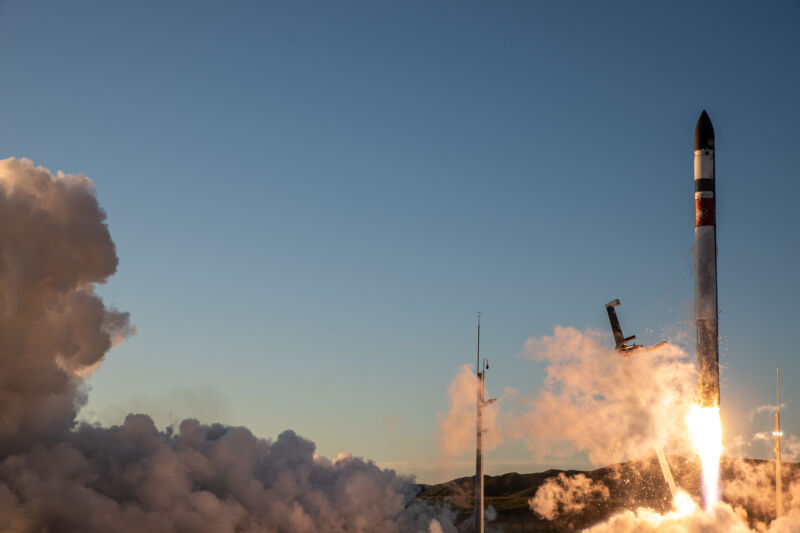

Rocket Lab’s launch cadence now “100 percent” driven by market demand [Updated]
source link: https://arstechnica.com/science/2022/08/peter-beck-explains-why-electron-may-only-ever-launch-10-15-times-a-year/
Go to the source link to view the article. You can view the picture content, updated content and better typesetting reading experience. If the link is broken, please click the button below to view the snapshot at that time.
More like Positron amirite? —
Rocket Lab’s launch cadence now “100 percent” driven by market demand [Updated]
"Our cadence today is 100 percent driven by market demand."
Eric Berger - 8/8/2022, 5:32 PM

For a rocket named after a negatively charged particle, the Electron launch vehicle has generated a lot of positive news lately.
Rocket Lab's small booster has already tied its record for annual successful launches with six this year, and it recently stepped up its cadence to complete three Electron missions in just five weeks. And these were not just any launches; they were arguably the most consequential missions since Rocket Lab began flying in May 2017.
On June 28, Electron launched the CAPSTONE mission to the Moon, demonstrating that a small rocket could launch a deep space mission and proving out the capability of the company's Photon satellite bus for complex in-space operations. And then, on July 13 and August 4, Electron launched a pair of missions for the US National Reconnaissance Office that showcased the company's "responsive" space capabilities.
In an interview with Ars, Rocket Lab CEO Peter Beck said that these missions, and the higher cadence, were possible because of "mature" processes now in place at Rocket Lab and the experience gained over the previous half-decade. He also spoke about why Electron is unlikely to fly much more frequently than it does now.
AdvertisementDriven by market demand
Building the first couple of rockets for any launch business is an all-hands-on-deck effort, with engineers and managers closely following the rocket down the production line. Now, Beck said, Electrons are built by technicians with a set of work instructions. "We invested a tremendous amount in all of the systems and processes to be able to do that," Beck said. "All of our production systems are really mature."
Rocket Lab is now ready whenever its customers are, Beck said. With its existing workforce, the company can build an Electron launch vehicle every 18 days. It has two launch pads and three clean rooms for pre-launch processing, and it holds two rockets at its New Zealand launch site at all times. Because of its vertical integration efforts, more than 80 percent of an Electron is built in-house, leaving its production less vulnerable to supply chain issues. "Because you are a dedicated service, you're offering a premium service such that you go when the customer is ready," Beck said.
Rocket Lab expects to fly 10 to 12 Electrons this year, which in terms of launch totals would make it the second most active Western launch service provider in the world, behind SpaceX. As measured in tonnage to orbit, of course, companies such as United Launch Alliance and Arianespace would rank higher.
Although the company may double its previous record for annual Electron launches, Beck said the company could still fly a lot more often.
Recommend
About Joyk
Aggregate valuable and interesting links.
Joyk means Joy of geeK